Google Ads: How to Advertise on Google in 2025
The comprehensive guide to everything you need to know about Google Ads. We cover types of campaigns, keywords, tactics, and strategies to use to scale in 2023.
Published November 5, 2024.

Google has been the default search engine for decades, and we collectively perform over a trillion searches on it every year. The sheer number of Google users creates an exceptional potential for advertising, and it is thus an indispensable tool for every business owner, particularly in the world of eCommerce.
Whether you're looking to increase brand awareness, get relevant customers, or boost your email sign-ups and app installs, Google Ads will help you reach your goals. This guide will thoroughly explain what you should do to utilize the capabilities of Google Ads and level up your business.
What are Google Ads?
Google Ads (previously Google AdWords) is a pay-per-click advertising platform that allows you to reach wide audiences by placing well-timed ads for your products across various websites. Google often utilizes search ads, but you can go for other types of ads, such as YouTube, display, or shopping ads, depending on your budget and needs.
Whether you have a brick-and-mortar store or an eCommerce business, Google Ads is a tool you must utilize. If you’re a brick-and-mortar store owner, Google advertising may help you accurately target people in the vicinity and attract them to your store.
If you run an eCommerce business, you’ll greatly benefit from Google Ads’ ability to target anyone around the world.
Another great benefit is that you can tailor your campaigns to your budget. That means that even if you’re just starting out and don’t have a great advertising budget, you can still grow your business and reap the benefits of Google Ads. If something goes wrong, you can even stop or pause your spending until you’re back on your feet and able to start a new campaign with a fresh Google Ads strategy.
Do Google Ads work?
Using Google Ads is absolutely worth it. They give you access to a very wide audience that you can target based on hundreds of data points. You can power up ads to target every type of customer regardless of where they are in the customer journey and get results very quickly.
In the short term, search campaigns will drive much more traffic to your business than SEO. While SEO is indispensable for sustainable growth and continuous online presence, paid ads will easily give you a push and earn you a ton of traffic in a short time.
Why advertise on Google?
68% of all customer purchases start with an online search, and 92% of those occur on Google. Running Google Ads with content relevant to the search results gives you a leg up in your niche.
Running paid campaigns also gives your organic search results a boost and helps give you more exposure on the search results page. And if you are in a competitive industry, Relying solely on organic traffic means that you’ll rank worse than your competition, even if you trade in top-notch products.
You must include Google Ads in your paid advertising strategy alongside Instagram and Facebook ads, and test out different types of campaigns and different ad targeting.
How does Google Ads work?
The way Google Ads work is that you bid on specific keywords related to your business, based on how much you’re willing to spend per click. If you win the bid, your ad appears above the organic search results when Google users search for those keywords.
While the basic principles of Google Ads are pretty simple, there are some nuances you must pay attention to if you want to fine-tune your campaigns.
Here they are.
AdRank and Quality Score
Google ranks your landing page on a number of factors including your quality score, user engagement, loading speed, and the number of relevant keywords.
Quality Score refers to your ad’s relevance and quality. It looks at things like the click-through rate of your ad and how well your ad matches the searcher’s intent.
To improve your click-through rate, look at these factors:
- The users’ landing page experience.
- Your keyword’s relevance.
- Your CTA and ad copy.
Your QS and bid amount will determine the AdRank. So you should boost your QS to improve the click-through rate, which will make your ad rank better.
Pro tip: want to improve your Google Rank? Hire one of our top Google Ads experts.
Location
Location refers to the geographical area where Google users will see your ads. This is a very useful feature because it helps you narrow down your target audience.
If you own a brick-and-mortar store, you’ll want to limit the location to a reasonable area around the store using specific zip codes. On the other hand, if you own an eCommerce business, you’ll be able to show your ads to everyone around the world with almost no limits.
Keywords
Google uses your keywords to match your ads to searchers’ queries. If you don’t choose the right keywords, you won't be able to reach your desired target audience. Therefore, you should invest time in keyword research and find the keywords that fit the searchers’ intent as closely as possible.
Of course, your keywords can always be tweaked so they match the searchers’ intent more closely. It will probably take some time until you find the right keywords, so you should be proactive and constantly look at new ways of optimizing them.
Match Types
When choosing and optimizing your keywords, you’ll get to choose between a few match types. Match types refer to how closely you want your keywords to match the searcher’s query. For example, you might want your keyword to match the query exactly, or you might want to show your ad to anyone with a somewhat-related query.
There are four match types to choose from:
- Broad match
- Modified broad match
- Phrase match
- Exact match
The default setting is the broad match. This option will use any word from your keyword phrase in any order. This might be a good option if you’re just starting out and trying to cast as wide a net as possible.
A modified broad match means that you’ll be able to lock in a word from your keyword phrase by denoting it with the + symbol. The matches you get will then always include that word.
If you opt for a phrase match, your matches will include your keyword phrase in the exact order. However, the matches may include additional words before or after your keyword phrase.
On the other hand, an exact match will preserve the exact order of your keyword phrase. So, if somebody searches for the keyword with slight alterations or a misspelling, they won’t see your ad.
The safest thing is starting with an exact match and then slowly broadening it as you figure out your target audience and campaign goals. You should always be ready to apply changes and adapt to new circumstances.
Headline and description
Without a catchy headline and description, searchers are likely to ignore your ad even if it ranks well. Your ad copy must align with your keyword, address the readers’ concerns, and give them the necessary information in only a few words.
It’s always a good idea to include the keyword in the headline so the searcher immediately knows that you can provide what they’re looking for. The description must address their needs or question clearly and concisely, without sounding too clickbaity.
Having a captivating Google Ads headline and description will make your ad stand out and make it perform well over time even if your bid is lower than that of your competitors.
Ad Extensions
Ad Extensions are a great way to give additional information to your potential customers and thus entice them to click your ad instead of your competitor's ads. There are a few types of Ad Extensions you can choose from:
- Sitelink extensions
- Location extensions
- Offer extensions
- Call extensions
- App extensions
Sitelink extensions allow you to extend the ad and show additional links to your potential customers. For example, you can add links to certain sections of your shop, which reduces the time customers have to spend browsing your website and allows them to jump straight to what they’re interested in.
A location extension works really well with search terms ending in “... near me”, and it allows you to add your address and phone number to the ad.
Offer extensions allow you to highlight special offers in your ads. Special offers are always enticing for consumers. They make the ad more effective and funnel searchers directly to the products you’re promoting.
If your goal is to get more customer calls, you can use call extensions. These extensions allow you to get more calls with ads that include your phone number and thus allow your potential customers to call you instantly.
App extensions give users a link from which they instantly download mobile apps. This removes the hassle of searching for the app on the app store, so it's very convenient for both users and advertisers.
Google Ads retargeting
Retargeting, also known as remarketing, is a great way to get additional conversions. Retargeting refers to following users who have engaged with your ads by tracking cookies and targeting them again to give them another chance to click your ad.
This might be one of the most important tools at your disposal because most potential customers need to see your ads more than once to convert. Need help? Talk to one of our top retargeting freelancers.
Google Ads terms you should know
If you want to use Google Ads you should also get acquainted with the lingo. While some of these phrases probably sound familiar, make sure that you understand what they all refer to in the context of Google advertising. Otherwise, it might be difficult to utilize the full potential of the platform.
AdRank
AdRank refers to the value that determines where your ad appears in comparison to other ads, and whether it appears at all.
Quality score
As we’ve mentioned previously, Quality Score is a metric that shows you how good your ad is compared to your competitors’ ads. You’ll see it on a scale from 1–10. A greater QS indicates that your ad is relevant and that your Google Ads landing page provides a good user experience.
Bidding
Every time Google Ads has a free space for a new ad, it will start an auction. Business owners who want to advertise bid in those auctions to get the advertising spot. There are four main bidding strategies:
- Maximize clicks - if your main goal is to drive more traffic to your website or to sell products.
- Maximize impressions or views - if your goal is increasing brand visibility, you should focus on impressions. This means that you won’t pay for each click you get, but rather for the number of impressions. In simpler terms, you’ll pay for every 1,000 times your ad appears to someone.
- Maximize conversions - If your main goal is increasing the number of conversions you get, you may choose to pay for each conversion you get from a Google ad, no matter what kind of conversion it is. If you want to choose this option, your conversion tracking must be turned on, so this focus is better suited for intermediate and advanced users.
- Maximize views - similar to impressions, but more focused on video ads. Bid on video views when you want to create captivating videos. This will also allow you to track how your ideal customers engage with your video, thus letting you tweak your video ads and improve them.
Campaign type
Google Ads allows you to choose between a few campaign types. These choices give you a lot of flexibility and allow you to precisely tailor your campaigns to your needs. The campaign types you can choose from are:
- Google Search ads
- Google display ads
- Google Discovery Ads
- Video ad campaigns
- Google Shopping campaigns
Let’s examine each campaign type in detail and see how and when you should use them.
Google search ads
Search ads They look very similar to the organic results on the first page of Google, except for a small pin that shows it’s an ad.
These ads can work for a wide variety of purposes, especially if the goal is to attract more people to your website.
Google display ads
Display ads are the ads Google displays on online publisher websites that are a part of the Google Display Network. This is something that benefits both website owners and advertisers. The website owners earn money and the advertisers get to show their ads to even wider audiences and/or retarget their existing visitors.
Video ad campaigns
Video ads mostly end up on YouTube, since it’s also a search engine and is owned by Google. While they may be annoying while you’re trying to watch a YouTube video, they can be very useful when you’re trying to advertise a product.
App ad campaigns
App campaigns get your app to your target audience and invite it to install the app or take a certain action in it. A great thing about this type of campaign is that you don’t have to do much. When you win the bid, Google does the rest of the job for you, so you can be sure your app will find the right audience.
Google Shopping campaigns
Shopping campaigns are an amazing choice if you’re an eCommerce brand and want to advertise your products. These ads show your products visually and place them above the organic search results.
These ads typically show a picture of your product, the price, and its rating. They provide a great way for customers to quickly access most of the information they need to make their purchase decision. You can edit all that information in your Google Merchant Center account. On the other hand, they do get more competitive with a lot of brands competing on price to win the bid.
Display Network
Google Display Network, known simply as GDN is a network of sites that cooperate with Google and allow the company to post ads for a fee. These can be textual ads or image ads, and they appear next to relevant keywords. The Display Network is often used for app and native ads, but can be used for all ad types.
Extensions
Extensions allow you to add more information to your ads to further entice the searcher to click on them. To make matters better for the advertiser, these extensions don’t come at an extra cost. As we’ve discussed in detail above, these extensions fall under a few categories:
- Location
- Sitelink
- Call
- App
- Offer
Keywords
Keywords are words and phrases that Google users search for when they have a query. When you use Google Ads, you have to bid for a keyword so Google will display your ad when someone searches for that keyword.
There are also negative keywords. These are keywords that you don’t want to rank for. Google will pull your bid from these keywords so you don’t waste your budget on them.
Click-through rate (CTR)
The click-through rate refers to the number of clicks you get on an ad compared to the total number of views on it. If you have a high CTR, it means that you’ve been able to target relevant keywords and create a high-quality ad that matches the search intent.
Conversion rate (CVR)
Your conversion rate is the percentage of people who take the desired action out of all the people who interact with your ad. For instance, if your ad is trying to sell something and it has 1,000 total interactions with 50 purchases, your conversion rate is 5%.
PPC
PPC or pay-per-click ads refer to the type of bidding where you pay for each click on your ad. This is the most common type of online advertising as it’s cost-effective and simple to use.
How to get started with Google Ads
Now that we’ve covered the basics, you’re probably eager to start your own campaign and get new customers. Let’s take a look at the steps you need to take to get started with Google Ads.
1. Set up your Google Ads account
The first step towards a successful campaign on Google Ads is creating an account. You’ll have to go to their homepage and click on Start Now. Google will give you a choice between using an existing Google account or creating a new one.
Once you sign in, you’ll go to a page where you’ll enter your business name and website. The people who click on the ad will end up on that website.
2. Select your advertising goal
When your account is ready, you’ll get to pick a marketing objective, depending on what you want to achieve with your campaign. You can choose between a few goals.
- Get more calls
- Get more website sales or sign-ups
- Get more visits to your physical location
- Get more views and engagement on YouTube
3. Create your ad
Now it’s time to create the ad, and that’s where the bulk of the work is. This is the most significant and time-consuming part of the process, but it is crucial for the success of your campaign.
Google gives you suggestions on what to write, but you’ll have to take some time to craft a truly captivating ad text.
4. Add keywords
Researching keywords and selecting the most appropriate ones is the next big step. Your keywords can make or break your campaign.
Use Google Ads Keyword Tool as well as external keywords tools to pick the best keywords for your campaign. Take some time to research and figure out what works for your business.
5. Set your ad location
After you’ve got your keywords, you need to pick your ad location. You can focus on the vicinity of your shop, but you can also pick any other location, or show your ad worldwide. The sky's the limit here.
6. Set up your ad budget
Google allows a lot of flexibility when it comes to your ad budget. You can choose between one of the options offered by Google, or you can set a custom amount.
Google’s default options are daily averages of $2.50, $6.0, and $13.90. The more you pay, the more clicks you get, but you should weigh your options carefully so you don’t blow your marketing budget.
7. Confirm payment
Once you’ve picked the right daily budget, you’ll have to enter your billing information to confirm the payment. This will seal the deal, and Google will soon start to display your ads to your target audience.
8. Connect with your Google Analytics
Set up your Google Analytics and connect it to your Google Ads so you can track your engagements and conversions easier. If you need help with that part, you can always chat with our vetted Google Analytics consultants.
9. Connect to your CRM
Connecting Google Ads to your CRM is another important step that helps you keep your data in one place so you can analyze and track it more easily. This will help you see which campaigns work best for your target audience and how to optimize them to get better results.
10. Set up conversion tracking
Conversion tracking is not mandatory, but without it, you’ll be in the dark when it comes to your ads’ ROI. It will tell you exactly how many customers your campaign has acquired, so you’ll always have an accurate gauge of your success.
11. Use UTMs
UTM parameters track all activities related to a specific link. In plain terms, that’s the part of a link that goes after the question mark. This code tells which offers or ads lead to conversions, so you know which parts of your campaign are the most successful.
It’s smartest to do this at the beginning when you’re setting up your Google Ads, so you don’t have to manually create UTMs after that. However, if you want to do this manually, you can do it with Google’s UTM builder.
4 Google Ads tips
We’ve covered the basics of running a successful advertising campaign on Google Ads, so you should be ready to get started. However, there’s some extra advice that could prove invaluable in your future endeavors.
Let’s check it out and try to make your campaigns even better.
Create a striking landing page
Your ad copy could be great but if your landing page sucks then you’re going to get nowhere. You need to have a landing page that is relevant to the ad, the search intent, and your advertising goals. It needs to be engaging enough to entice your potential customer to stay on the page and actually purchase your product.
Automate bidding
You should utilize tools such as Smart Bidding to streamline the bidding process. Smart Bidding will automatically reduce or increase the bid depending on the chances of winning the bid. This will help you save some money because you’ll only spend it when there’s a real chance of winning. This is useful for anyone that’s just starting out.
Use negative keywords
Negative keywords are super important because Google has a tendency to display your ads for completely unrelated keywords. Use negative keywords to exclude unrelated terms and phrases, which will narrow everything down and prevent your ad from appearing in irrelevant searches.
Keep improving your strategy
If you want to make the best of Google Ads, you have to improve your ads over time constantly. Even if your campaign is working as intended, you should keep track of everything that’s happening and find ways to improve it.
Your competitors are always looking to improve their campaigns, so always keep testing every aspect of your campaign - from the ad copy all the way to the landing page design.
Looking to start a Google Ads campaign?
Tried growing the channel on your own but didn’t see the results you were looking for? We can help!
We can connect you to over 600 vetted, hand-picked experts and Google Ads Agencies that can help you create the perfect campaigns to scale your business. Get started now!
FAQs
How to advertise on Google
Here's a step-by-step process for setting up a successful campaign:
1. Define your marketing goals - what are you focusing on? Getting more qualified leads? Expanding to new target markets? Or getting more impressions and video views?
2. Choose your targeting and budget - make sure you define your monthly budget, location settings, and the type of keywords you want your ad to show up for.
3. Set up the ad group - this is where you put in all your various target keywords.
4. Craft your ad - create the headline, copy and creative for your ad and upload it to the system.
5. Make sure your Google Analytics and conversion tracking is working properly
5. Review and publish
How much does it cost to advertise on Google?
The average cost of Google Ads can vary based on your industry. Search campaigns usually cost $1 to $2 per click, Display campaigns on Google Display Network cost $1 or less per click. Professional Google Ads management costs between $500 and $5,000 per month or 12-30% of ad spend. And PPC management tools can be anywhere from $15 to $800 per month.
How do I advertise directly on Google?
- Log in to your Google Ads Manager and create a new campaign
- Select your marketing goal and campaign type
- Create your campaign name and select the network
- Choose audience targeting settings
- Set up your budget and bidding
- Create Ad Extensions
- Set up ad groups and short-tail and long-tail keywords
- Create and launch your ads
How can I advertise on Google for free?
You can't advertise on Google for free, but what you can do is to optimize your content and show up organically in the search results (also called Search Engine Marketing). Here are the best ways to do that:
- Write content that's valuable and useful
- Get attributes mentioned in reviews
- Mention special features in your Google My Business description
- Perform Local SEO
- List your business on directories
- Optimize your listing on Google Maps
- Publish unique content
- Get backlinks from reputable sites
Is there a monthly fee for Google Ads?
Google Ads is an online advertising platform that charges you every time a user either views or clicks on your ad. So there's an advertising cost associated with launching campaigns but no other costs besides that.
How do I get Google Ads for beginners?
Here's how to set up Google Ads for beginners:
- Learn the basic terms
- Create a Google Ads account
- Set your budget
- Pick your keywords
- Set up your keyword match types
- Set up your landing pages
- Decide which devices you want to show up on
- Create the ad
- Launch the ad
- Track performance and optimize as you go


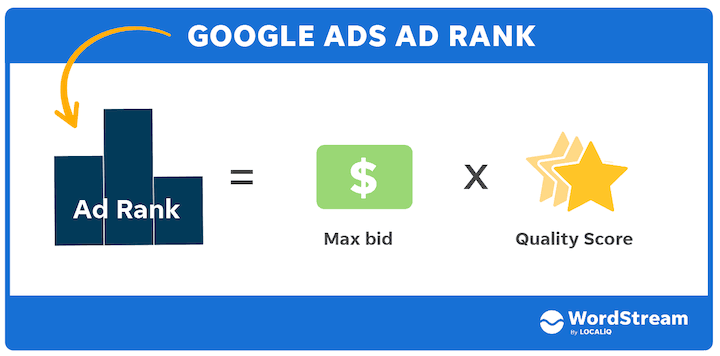
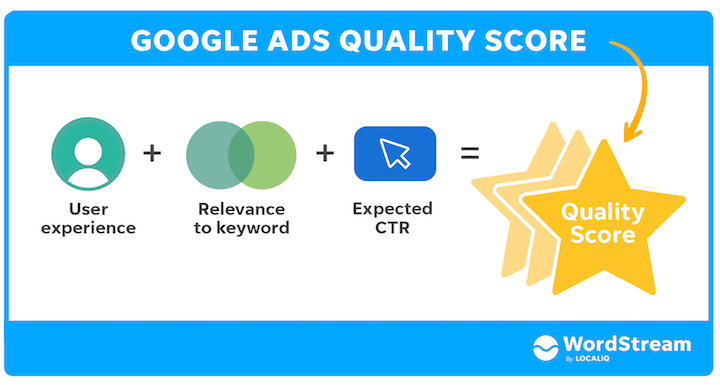


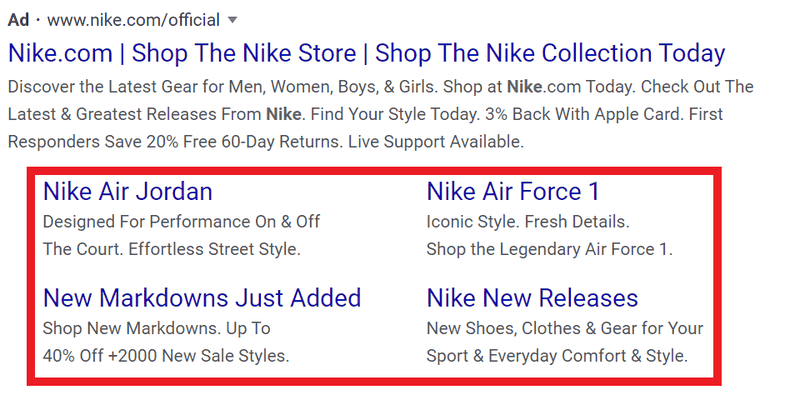



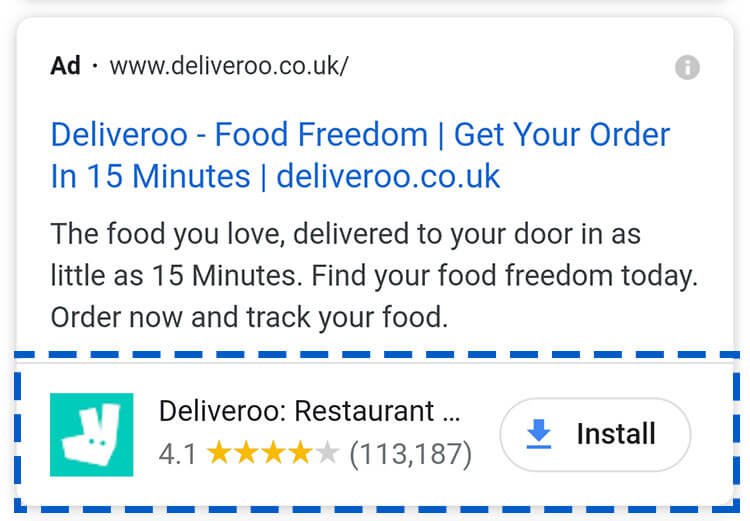


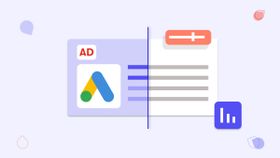


![11 Best Google Ads Bidding Strategies + Expert Tips [{year}]](https://entail.mayple.com/en-assets/mayple/fit-in/280x280/63d92417279d65f40a2288f1_googleadsbiddingstrategies1_fb4ec40b966edd0119f980595327fd53_2000-1699518572195.jpg)